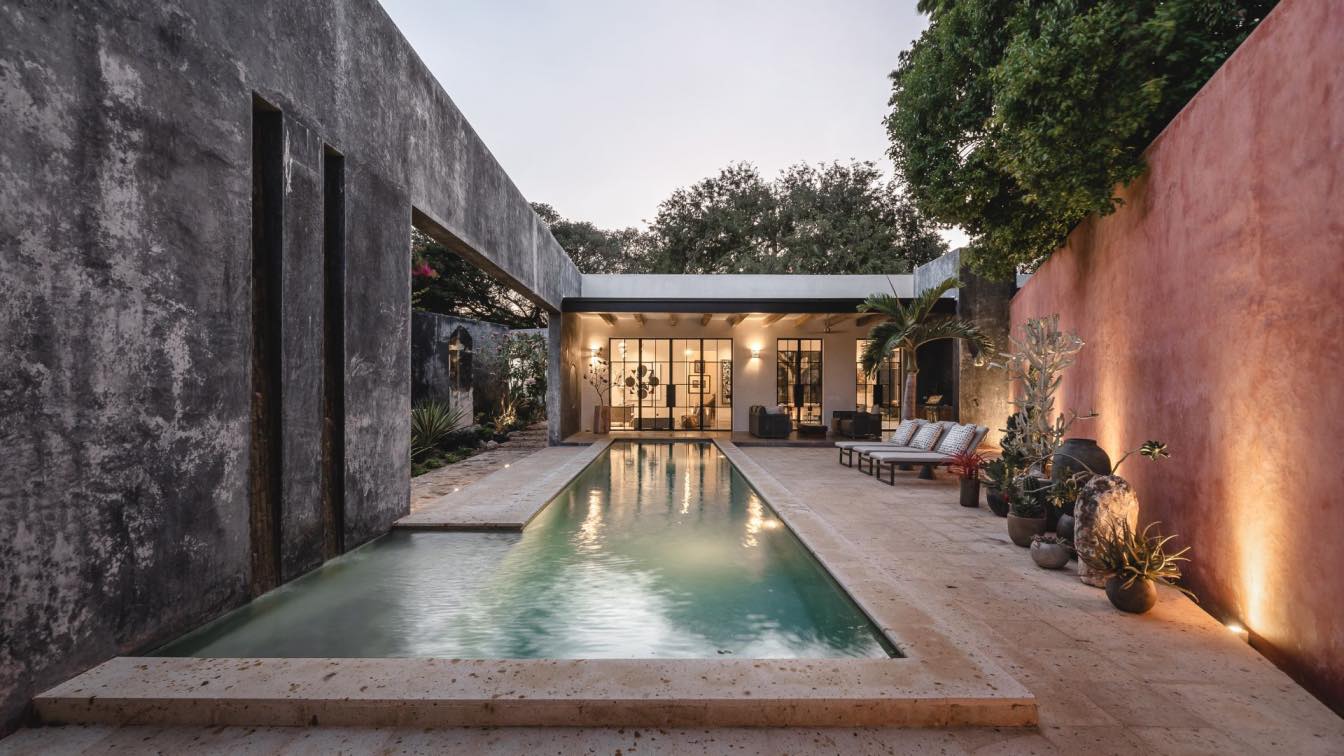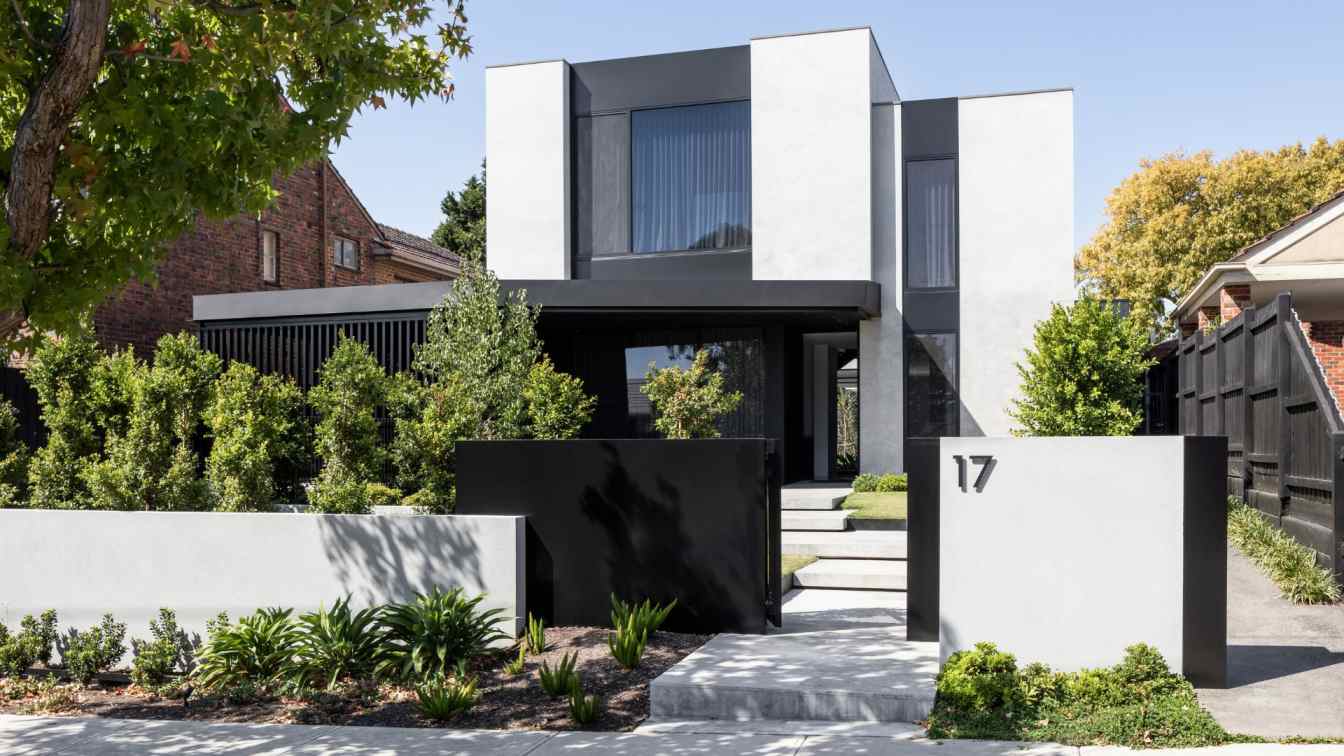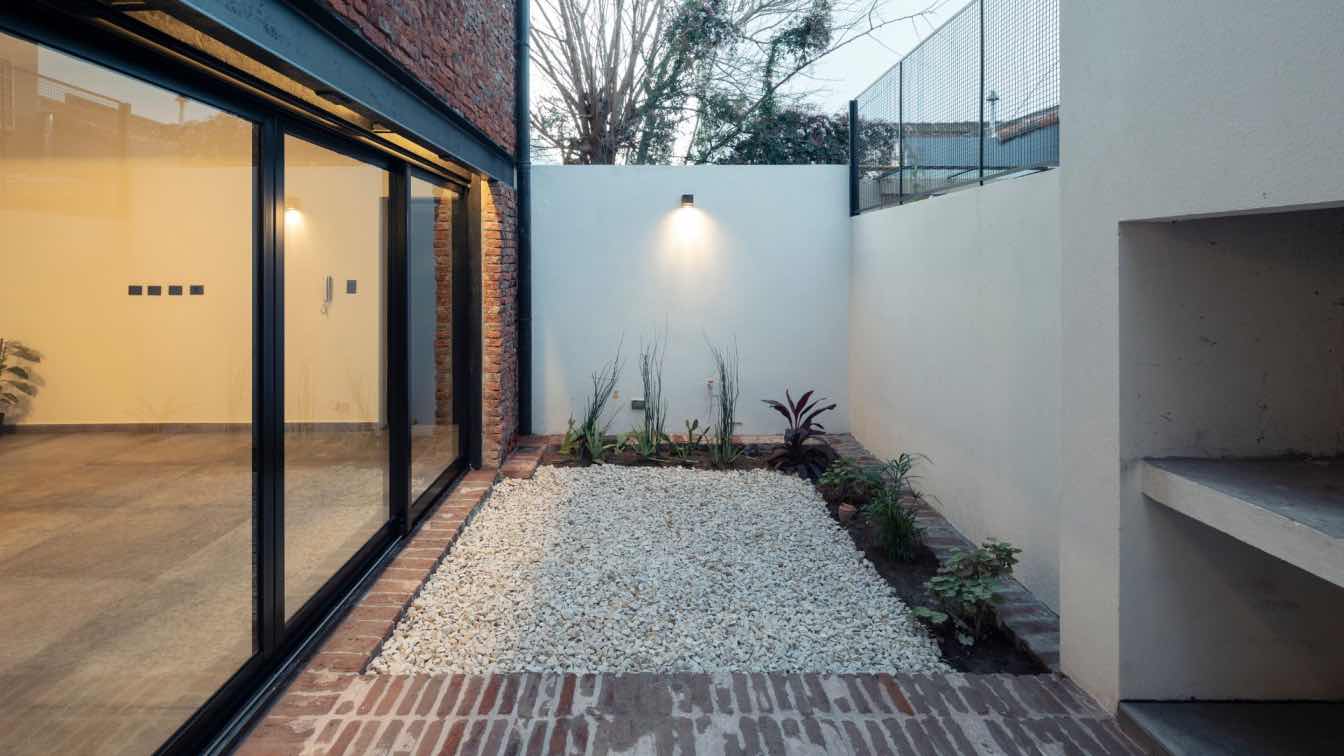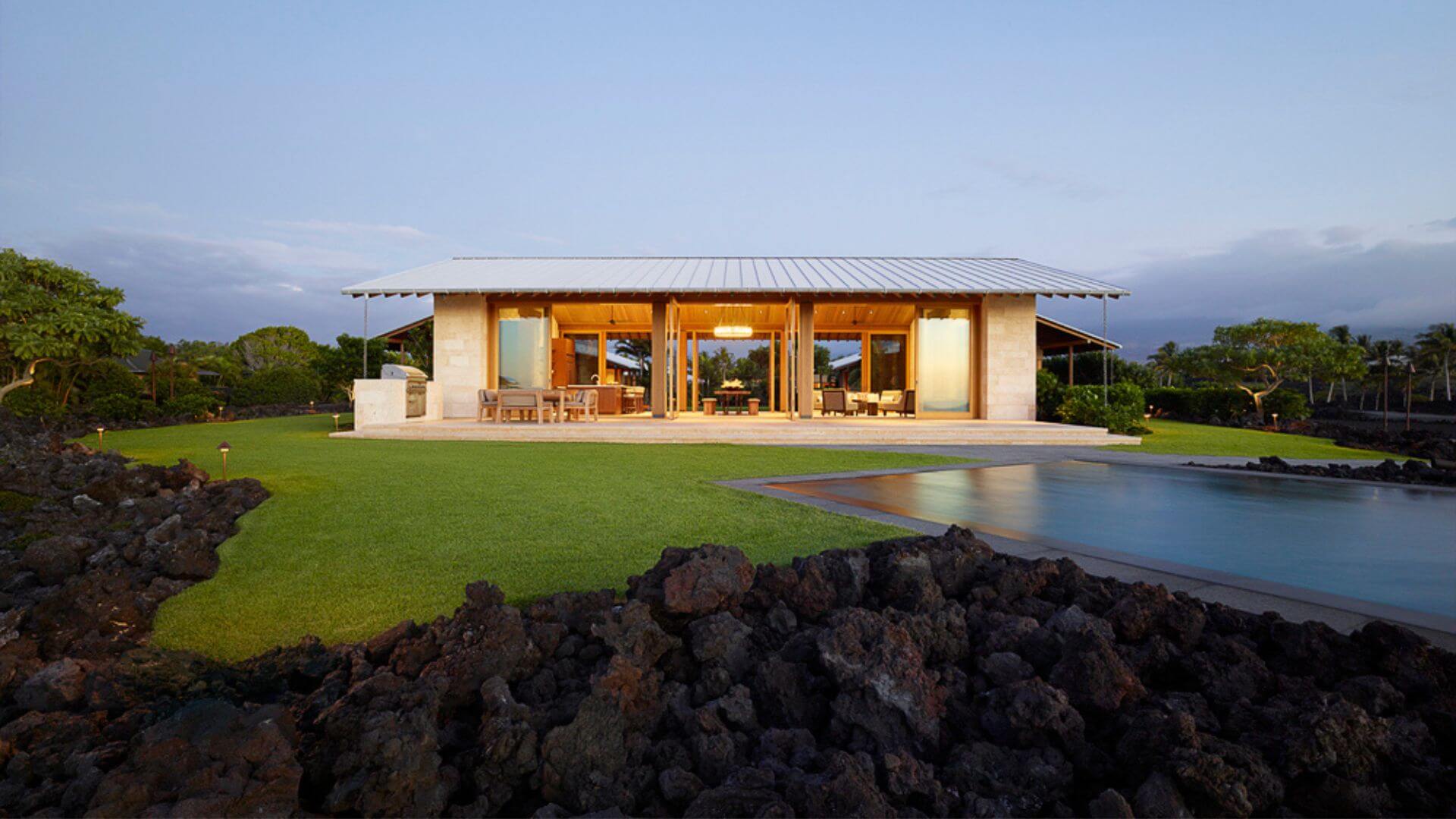Taller Estilo Arquitectura: With the premise "He came first" El Tamarindo is a house that aims to explain the symbiosis between architecture and nature. Being the tree the main piece and axis of the architectural project. Built elements that frame nature from the main entrance to the other spaces that make up the program. The location of the walls that order the plant works as guidelines that lead us to the main access to the house.
The public and private areas are separated in a natural way by orientation and responding to the original location of the tree, keeping most of the original landscape intact and bringing the natural landscape inside. All areas of the house are naturally connected to the outdoors, always seeking internal courtyards and paths that end in gardens. A proposal that not only rescues a tree, but makes it the protagonist of the project.
A house with a deep connection with nature and art. Instead of avoiding trees, the architects decided to embrace them. Nestled in the center of a block in the neighborhood of San Sebastian, a particular terrain for its irregular characteristics and its pre-existing vegetation was the canvas to develop a single-family house for a visual artist and his wife, a graphic designer and writer.

Although the architectural program was not complex, the characteristics of the land, the client's requirements in terms of image, the existing vegetation of major size that had to be preserved in its entirety and the adjacent elements were the factors that created the challenge of solving a house with 2 bedrooms with bathroom, living/dining/kitchen in open plan, a studio for plastic work and a writing and work studio in addition to various outdoor areas that include garden areas, swimming pool, outdoor dining area, outdoor living area and sleeping area, all resolved in a single plant.
The general concept of the project was to create a house that allows its inhabitants to enjoy throughout the day, various spaces throughout the complex, organizing them around the Tamarindo, which was the oldest and largest tree, looking for the best possible orientation to take advantage of cross winds and natural lighting.
Two elements clearly stand out in the composition of the complex, the Tamarind Tree that serves as a focal point and organizes the spaces around it, as a central courtyard allowing the interiors to open to a controlled exterior, designed and contained by the architectural volumes.

The second element is the conducting wall that welcomes all the inhabitants, both local and foreign, and takes them little by little through the terrain, creating a pleasant journey along the entire path, from the street access to the entrance of the house. This wall becomes present and is transformed throughout its length, because sometimes it is completely blind and imposing with its 6.20 meters high and others it opens to create a large window that frames in both directions either the built architectural element or the existing and complementary vegetation, likewise it is transformed into a niche that marks the access and houses the main exterior entrance hall to finally finish and receive the plastic work studio.
The materials of the interior and exterior walls were essential to achieve the image that the clients were looking for, although the taste for the Yucatecan haciendas was present, the main premise was to create a contemporary, timeless work where the materials (like the haciendas) could age with dignity and show the patina of time, integrating it to the image of the house itself. It was precisely this search that led us to decide to use materials that felt natural, raw, with a changing life during the day.
The polished cement with integral color offers us this diversity, since it is not a totally flat and uniform surface, giving a more natural and organic sensation. This image achieved and the functional solution of the spaces generated an image that we call Contemporary Hacienda.





































